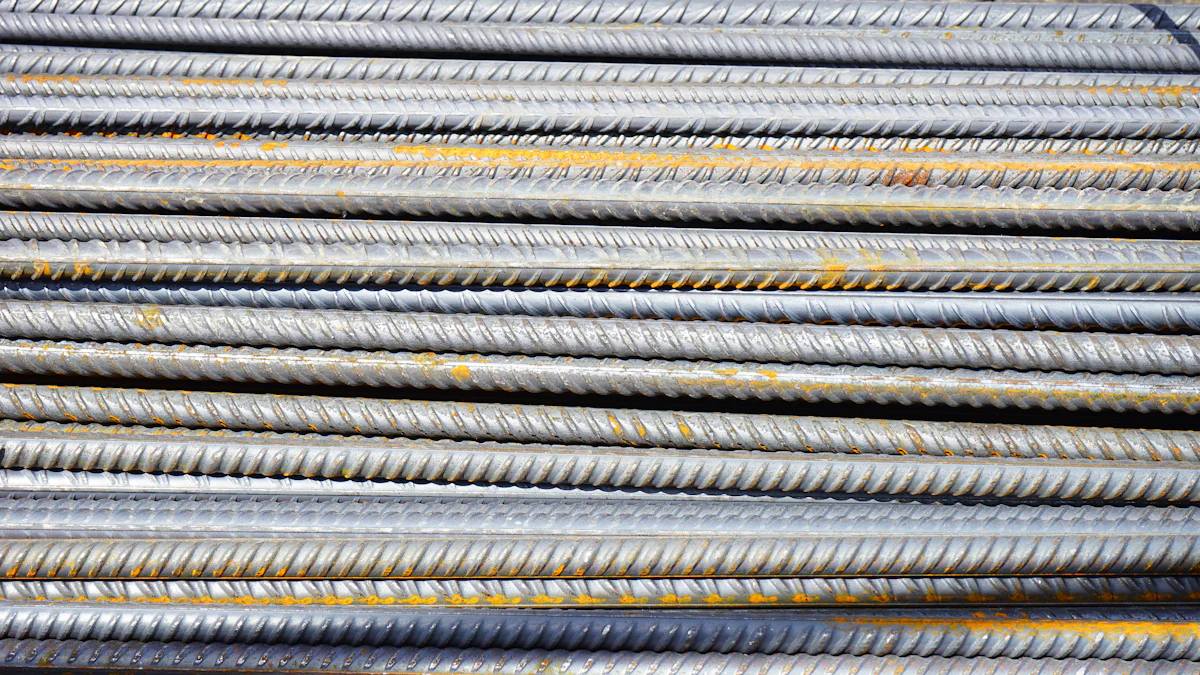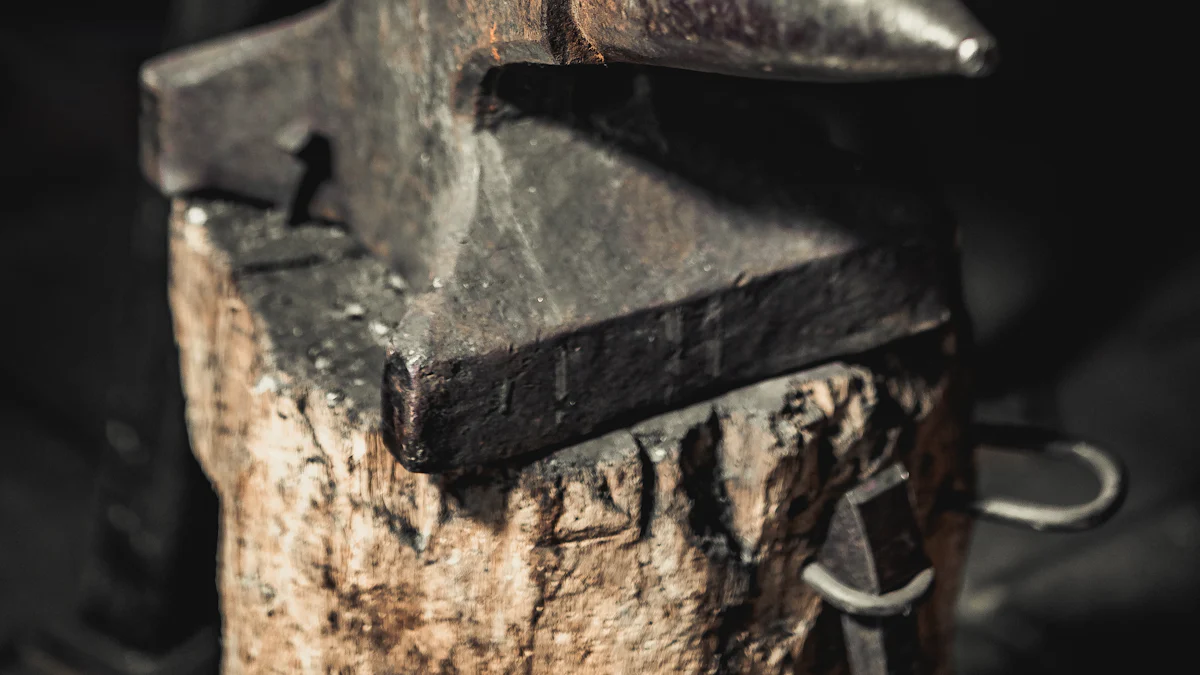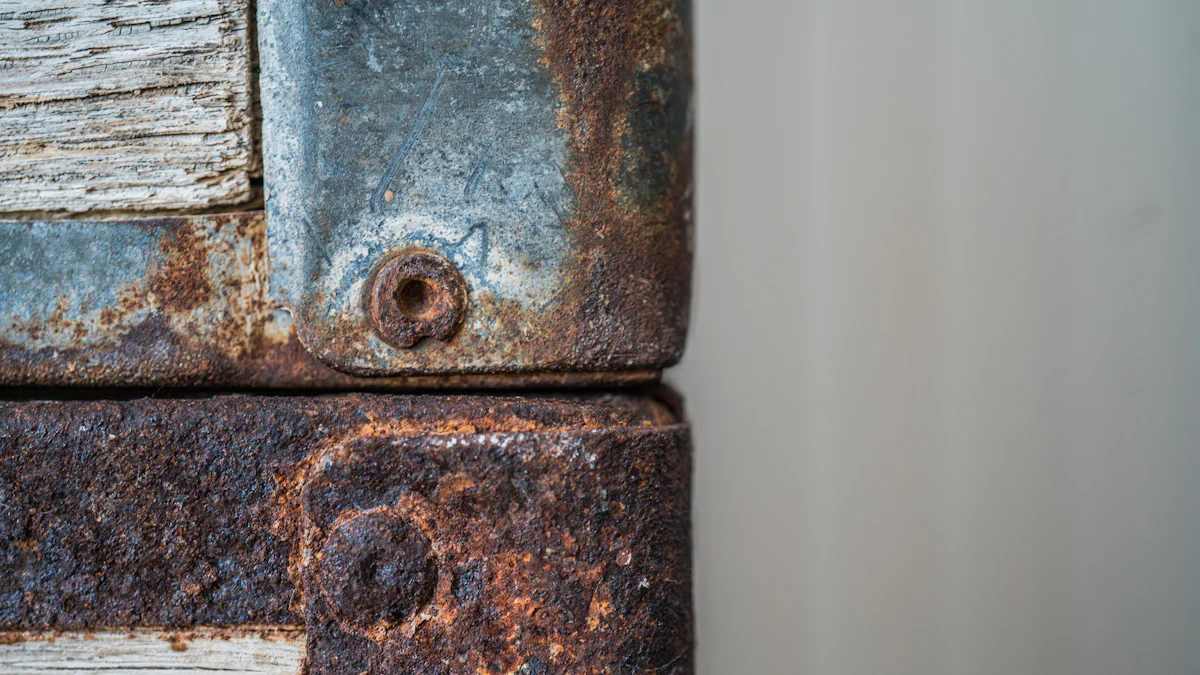
When comparing Iron Vs Steel, their unique properties determine their applications. Steel surpasses iron in strength and durability due to its alloy composition. For instance, cast iron excels in compressive strength, making it ideal for engine blocks. Steel, with its high tensile strength, dominates in drivetrain components and structural projects requiring flexibility and toughness.
Key Takeaways
- Steel is stronger and lasts longer than iron. It is used for bridges and buildings that need to handle heavy loads.
- Iron is good at handling pressure and costs less. It works well for cheaper projects or ones with tricky designs.
- Knowing how materials rust and need care helps pick the best one for your project.
Iron Vs Steel: Definitions and Composition
What Is Iron?
Iron is a naturally occurring element and one of the most abundant metals on Earth. I often describe it as the backbone of construction and manufacturing due to its versatility. In its pure form, iron is relatively soft and malleable. However, it becomes significantly stronger when combined with carbon or other elements. Iron is primarily used in two forms: cast iron and wrought iron. Cast iron contains 2% to 4% carbon, along with silicon and other alloying elements, which makes it hard but brittle. Wrought iron, on the other hand, has a lower carbon content and is known for its ductility and resistance to corrosion.
What Is Steel?
Steel is an alloy primarily made of iron and carbon, with less than 2% carbon content. I find steel fascinating because its properties can be tailored by adjusting its composition. For example, adding chromium creates stainless steel, which resists corrosion. Manganese improves strength and wear resistance, while nickel enhances toughness. Steel’s versatility makes it indispensable in industries ranging from construction to automotive manufacturing. Its ability to combine strength, flexibility, and durability sets it apart from pure iron.
Key Differences in Composition
The primary difference between iron and steel lies in their carbon content and the presence of alloying elements. I’ve summarized these distinctions in the table below for clarity:
| Material | Carbon Content | Other Elements |
|---|---|---|
| Cast Iron | 2% – 4% | Silicon, other alloying elements |
| Wrought Iron | 1% – 2% slag | Mostly iron |
| Steel | < 2% carbon | 1% manganese, small amounts of silicon, phosphorus, sulfur, oxygen |
| Low-carbon Steel | 0.05% – 0.3% carbon | Good formability and weldability |
| High-carbon Steel | 0.6% – 2% carbon | High strength and hardness |
| Stainless Steel | Minimum 10.5% chromium | Corrosion resistant |
Steel’s alloying elements further enhance its properties. For instance, carbon increases tensile strength and hardness, while chromium boosts corrosion resistance. The table below highlights how various elements influence steel:
| Alloying Element | Effects on Steel Properties |
|---|---|
| Carbon (C) | Increases tensile strength, hardness, and wear resistance; decreases ductility. |
| Chromium (Cr) | Enhances tensile strength, hardness, and corrosion resistance. |
| Manganese (Mn) | Improves strength and wear resistance. |
| Nickel (Ni) | Adds toughness without sacrificing ductility. |
| Molybdenum (Mo) | Enhances strength and corrosion resistance. |
These compositional differences explain why steel generally outperforms iron in strength and durability. However, iron remains valuable for specific applications where its unique properties shine.
Iron Vs Steel: Strength Comparison

Tensile Strength of Iron
Iron, in its pure form, has relatively low tensile strength. It can withstand stretching forces to a certain extent, but its softness limits its performance in high-stress applications. Cast iron, with its higher carbon content, offers improved compressive strength but remains brittle under tension. Wrought iron, on the other hand, provides better ductility and moderate tensile strength, making it suitable for decorative applications like gates and railings. However, when compared to steel, iron falls short in handling tensile loads effectively.
Tensile Strength of Steel
Steel surpasses iron in tensile strength due to its alloy composition. By adjusting the carbon content and adding elements like manganese or nickel, steel achieves remarkable strength and flexibility. For example, high-carbon steel exhibits exceptional hardness and tensile strength, making it ideal for tools and cutting instruments. Stainless steel, with its chromium content, combines strength with corrosion resistance, ensuring durability in harsh environments. Historical advancements, such as the Bessemer process and the development of electric arc furnaces, have further enhanced steel’s strength and quality, enabling its widespread use in construction and manufacturing.
Factors That Influence Strength
Several factors influence the strength of both iron and steel:
- Temperature affects steel’s performance, with extreme heat or cold altering its properties.
- High humidity accelerates corrosion, weakening the material over time.
- Manufacturing processes, such as heating, rolling, and cooling, play a critical role in determining steel’s strength.
- Grain size impacts strength; finer grains result in stronger steel.
- Heat treatment refines microstructures, enhancing tensile strength and durability.
- Surface treatments like shot peening and special coatings improve wear resistance and protect against corrosion.
These factors highlight the importance of proper material selection and processing to achieve optimal performance. While iron has its limitations, steel’s adaptability and strength make it the preferred choice for demanding applications.
Iron Vs Steel: Durability Comparison

Corrosion Resistance
Corrosion resistance plays a critical role in determining the durability of materials. Pure iron rusts quickly when exposed to moisture, which limits its use in environments prone to humidity or water exposure. I’ve observed that this makes iron less suitable for outdoor applications unless treated with protective coatings. Steel, on the other hand, offers varying levels of corrosion resistance depending on its composition. For instance, stainless steel, which contains at least 10.5% chromium, forms a protective oxide layer. This layer prevents rust and makes stainless steel ideal for harsh environments, such as marine or industrial settings. This difference highlights why steel often outlasts iron in demanding conditions.
Performance in Various Environments
The performance of iron and steel varies significantly across different environments. Iron performs well in applications requiring compressive strength, such as building frames or bridges. However, it struggles in environments with high moisture or chemical exposure due to its susceptibility to rust. Steel, with its tailored compositions, excels in diverse conditions. For example, in the construction industry, steel is used for high-rise buildings and stadiums because of its strength and durability. In the energy sector, steel’s resilience makes it indispensable for pipelines and offshore platforms. These examples demonstrate how steel’s adaptability gives it an edge over iron in most scenarios.
Maintenance and Longevity
Maintenance requirements and longevity also set iron and steel apart. Iron structures often require regular maintenance, such as painting or coating, to prevent rust and extend their lifespan. This can increase long-term costs. Steel, particularly stainless steel, requires minimal upkeep due to its corrosion resistance. I’ve found that this makes steel a more cost-effective choice for projects where durability and low maintenance are priorities. For example, in automotive and aerospace industries, steel components last longer and perform better under stress, reducing the need for frequent replacements. This durability ensures that steel remains the preferred material for long-term applications.
Pros and Cons of Iron Vs Steel
Advantages of Iron
Iron offers several benefits that make it indispensable in construction and manufacturing.
- Strength: Iron provides excellent compressive strength, making it ideal for structural elements like beams and columns.
- Durability: It withstands harsh environments, which is why industries rely on it for pipelines and offshore platforms.
- Versatility: Iron finds use in diverse applications, from vehicle bodies to chassis in the automotive sector.
I’ve noticed that iron’s affordability and ease of availability further enhance its appeal for large-scale projects. Its ability to support robust structures ensures its continued relevance in modern construction.
Disadvantages of Iron
Despite its strengths, iron has notable drawbacks. Pure iron rusts quickly when exposed to moisture, requiring frequent maintenance. Cast iron, while strong, is brittle and prone to cracking under tension. Wrought iron, though more ductile, is labor-intensive to produce, increasing costs. These limitations make iron less suitable for applications requiring high tensile strength or minimal upkeep.
Advantages of Steel
Steel surpasses iron in many aspects, making it the preferred choice for demanding applications.
- High Strength: Steel’s tensile and compressive strength ensure structural integrity in buildings and bridges.
- Durability: Its resistance to wear and corrosion guarantees a long lifespan, even in harsh conditions.
- Recyclability: Steel’s high recyclability supports sustainability efforts.
- Versatility: With various grades and types, steel meets diverse industry needs.
- Cost-Effectiveness: Mass production reduces steel’s cost per unit, making it economical for large-scale projects.
These qualities make steel indispensable in infrastructure, manufacturing, and energy sectors.
Disadvantages of Steel
Steel has its limitations. It can corrode in moist environments without protective coatings, weakening its structural integrity. Its weight poses challenges in industries requiring lightweight materials, such as aerospace. Additionally, traditional steel production methods contribute to environmental concerns, including carbon emissions and habitat disruption. These factors highlight the need for sustainable practices in steel manufacturing.
Choosing Between Iron and Steel for Practical Applications
When to Use Iron
Iron remains a practical choice in several scenarios where its unique properties shine. For example, its cost-effectiveness makes it ideal for projects with tight budgets. Additionally, iron’s casting capabilities allow for the creation of complex shapes, which is why industries often use it for intricate designs. Iron also performs well in applications requiring vibration resistance or wear durability, such as heavy machinery components.
Here’s a quick overview of situations where iron is preferred:
| Scenario Description | Reason for Preference |
|---|---|
| Budget constraints are critical. | Cost-effectiveness of iron. |
| Complex shapes requiring casting are necessary. | Iron’s casting capabilities. |
| Applications demand vibration resistance or wear durability. | Iron’s durability in demanding conditions. |
Iron also excels in traditional and decorative uses. Security gates, hand-forged fixtures, and durable furniture are just a few examples where iron combines functionality with aesthetic appeal.
When to Use Steel
Steel outperforms iron in applications requiring strength, durability, and versatility. Its superior strength-to-weight ratio makes it indispensable for infrastructure projects like bridges, skyscrapers, and railways. In the automotive industry, lightweight steel enhances both fuel efficiency and safety. Aerospace applications rely on advanced steel alloys for critical components like landing gear and jet engines.
Some common uses of steel include:
- Infrastructure: Essential for bridges, skyscrapers, and railways.
- Automotive Industry: Lightweight steel improves fuel efficiency and safety.
- Aerospace: Advanced steel alloys are crucial for landing gear and jet engine parts.
Steel’s adaptability also extends to consumer goods, energy systems, and construction materials, making it a versatile choice for modern industries.
Key Factors to Consider
Choosing between iron and steel depends on several factors. Cost, durability, application, and maintenance requirements play a significant role in decision-making. For instance, iron’s lower upfront cost may appeal to budget-conscious projects, but steel’s long-term value often outweighs its higher initial expense.
Here’s a comparison to guide your decision:
| Factor | Iron | Steel |
|---|---|---|
| Cost | Generally lower upfront cost | Higher upfront cost but better long-term value |
| Durability | Short lifespan, prone to rust | Long lifespan, corrosion-resistant options available |
| Application | Suitable for complex shapes and vibration resistance | Preferred for structural integrity and safety |
| Maintenance | Higher long-term maintenance costs | Lower maintenance costs due to durability |
Understanding these factors ensures you select the right material for your project, balancing performance, cost, and longevity.
Steel’s superior tensile strength and durability make it the go-to material for structural and high-stress applications. Cast iron, with its exceptional compressive strength, remains indispensable for heavy-duty uses like engine blocks.
| Material Type | Tensile Strength (MPa) | Corrosion Resistance |
|---|---|---|
| Cast Iron | ~150–400 | Low |
| Stainless Steel (304) | ~515–700 | High |
Choosing between them depends on understanding project demands and material properties.
FAQ
What is the main difference between iron and steel?
The primary difference lies in composition. Iron is a pure element, while steel is an alloy of iron and carbon, often with other elements for enhanced properties.
Why does steel resist corrosion better than iron?
Steel resists corrosion better due to alloying elements like chromium. These elements form a protective oxide layer, preventing rust and extending the material’s lifespan.
Can I recycle both iron and steel?
Yes, both materials are recyclable. However, steel recycling is more efficient due to its widespread use and established recycling processes in various industries. ♻️
